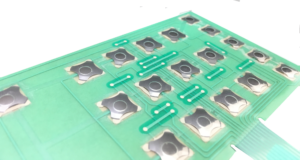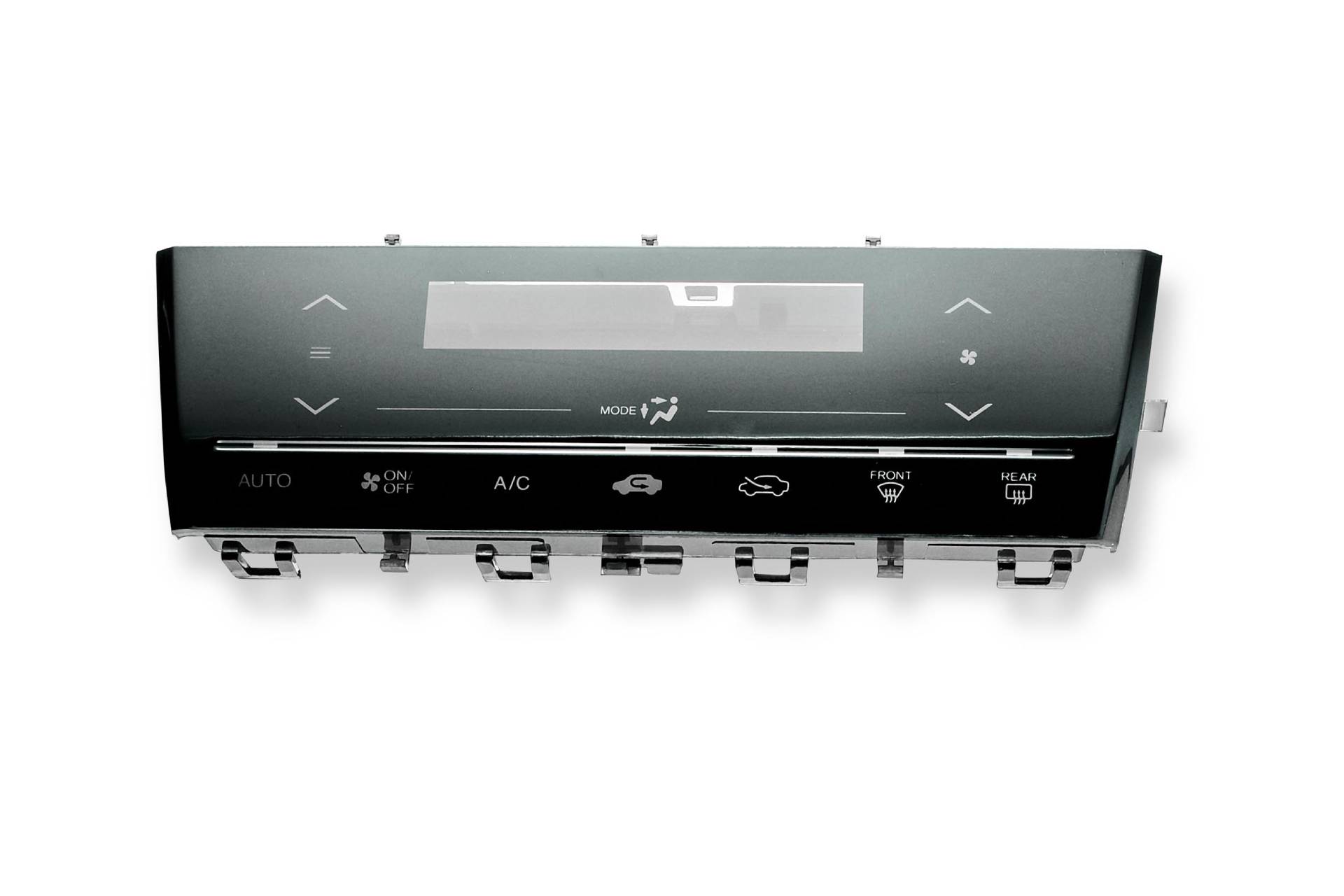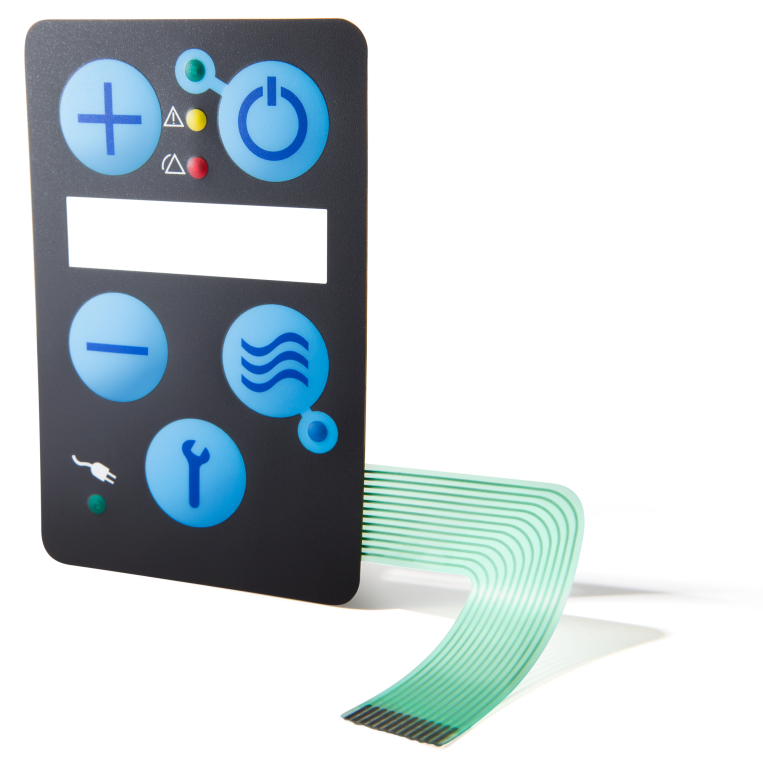Trusted Membrane Switch Manufacturer for Personalized Electronic Interfaces
Recognizing the Significance of Membrane Switch in Modern Electronic Devices and Their Applications
Membrane changes work as a crucial element in modern-day electronics, supplying an efficient user interface for customer communication. Their light-weight and customizable nature makes them ideal for a variety of applications throughout varied sectors. Understanding their crucial parts and advantages can offer insights into their expanding relevance. As innovation continues to breakthrough, the evolution of Membrane switches over elevates questions regarding their future applications and design advancements. What exists ahead in this vibrant field?

What Are Membrane Switches?
Membrane buttons are essential elements in modern electronic devices, working as user interfaces that promote communication between users and tools. These switches contain numerous layers, including a graphic overlay, a glue layer, and a circuit layer, every one of which collaborate to develop a long lasting and useful user interface. The style permits for a flat, inconspicuous service that can be customized concerning dimension, shape, and visual look, making them appropriate for numerous applications, from consumer electronics to clinical devices. The tactile comments supplied by Membrane switches improves user experience, while their resistance to dust and wetness makes them perfect for challenging atmospheres. Membrane buttons can include functions such as backlighting and published graphics, better broadening their functionality. Their convenience and robustness make them a favored option in markets where dependability and convenience of use are critical, ultimately adding to the smooth procedure of modern electronic gadgets.
Trick Components of Membrane Changes
While numerous parts add to the performance of a membrane layer button, 3 key layers play significant roles in its style and procedure. The top layer, commonly made from a durable polymer, acts as the interface for user interaction, usually featuring published graphics and icons. Beneath this is the spacer layer, which keeps the essential range between the top layer and the circuit layer. This spacer layer assurances that the button turns on just when pressed, stopping unintended inputs. Ultimately, the circuit layer contains conductive traces that complete the electric circuit when the leading layer is dispirited. These traces can be made from numerous products, including copper or silver. Together, these components produce a reliable and durable gadget that is compact and functional, suitable for a large range of electronic applications, from house devices to medical tools. Understanding these key elements is crucial for appreciating the overall functionality of Membrane switches.
Advantages of Making Use Of Membrane Switches Over

Membrane Switch Manufacturing Process
Comprehending the Membrane switch production process exposes the detailed actions involved in creating these crucial parts. The process normally begins with the design phase, where specifications and layouts are created using specialized software program. Following this, the graphic overlay is published on a versatile substratum, typically making use of high-resolution printing techniques to guarantee quality and precision.Next, the sticky layers are used, which serve to bond the various components with each other. The circuit layers, made from conductive inks or materials, are then printed onto a different substrate. These layers are carefully aligned and laminated flooring to produce a useful switch.After assembly, the switches undertake testing to verify performance and resilience. Quality assurance actions are executed throughout the procedure to recognize and fix any problems. Ultimately, the finished Membrane switches are packaged and planned for circulation, all set to meet the demands of modern-day digital applications.
Applications of Membrane Switches in Different Industries
Membrane switches are significantly utilized throughout numerous industries, particularly in medical tools and consumer electronic devices. In the medical field, they supply trustworthy control user interfaces for devices that call for accurate operation. In customer electronics, these switches boost customer interaction by using receptive and smooth interfaces. Receptive Medical Tools Control
Various modern clinical devices use Membrane switches for structured operation and improved individual communication. These switches offer a reputable, long lasting interface for a variety of applications, consisting of diagnostic devices, person tracking systems, and surgical instruments. Their adjustable styles permit details formats that can suit the special needs of healthcare experts, ensuring instinctive navigating and reliable accessibility to necessary features. In addition, Membrane switches are immune to contaminants, making them appropriate for sterile environments. The tactile feedback they provide can improve user confidence, lowering the danger of mistakes during essential medical treatments. In general, the assimilation of Membrane switches in clinical tools considerably adds to improved functional performance and individual safety in medical care setups.
Consumer Electronics Interfaces
In the domain name of consumer electronics, Membrane switches play a vital role in enhancing interface throughout a large range of tools. These switches are important to products such as remotes, microwaves, and gaming consoles, supplying a efficient and user-friendly interface. Their layout enables a seamless assimilation of graphics and performance, making it possible for suppliers to create smooth, modern aesthetic appeals without jeopardizing use. Membrane switches are also known for their durability, often withstanding comprehensive use and exposure to different environmental conditions. Furthermore, they can incorporate functions like backlighting and tactile comments, additional enhancing the customer experience. As consumer needs for advanced yet user-friendly interfaces grow, Membrane switches proceed to be an essential element beforehand digital gadget functionality.
Style Factors To Consider for Membrane Changes
Creating reliable Membrane switches calls for careful attention to various elements that affect both functionality and customer experience. One important consideration is the option of materials, as they can influence durability, tactile feedback, and visual charm. Choosing a suitable adhesive is vital for assuring long-term adhesion and resistance to environmental factors.In addition, the design and design of the button must fit user interaction, with switch sizes and Your Domain Name spacing optimized for convenience of use. The consolidation of graphics and labeling need to prioritize clarity and exposure under different lights conditions.Consideration of electric attributes, such as actuation force and switch level of sensitivity, will certainly boost the responsiveness of the Membrane button. Furthermore, the design must fit making procedures to assure cost-effectiveness and timely production. In general, a well-thought-out design boosts both the functionality and the individual experience of Membrane buttons in modern electronic devices.

Future Trends in Membrane Switch Technology
As modern technology remains to advance, Membrane switches are poised to incorporate brand-new developments that will certainly improve their performance and application in various fields. One significant fad is the unification of versatile and resilient products, which will certainly raise the lifespan and integrity of these buttons. Improved surface area appearances and adjustable graphics are additionally prepared for, permitting more instinctive individual interfaces.Moreover, the combination of wise technology, such as touch-sensitive surfaces and haptic responses, is expected to enhance customer communication, making Membrane changes much more responsive and interesting. Furthermore, developments in printed electronics will make it possible for a lot more complicated wiring within thinner profiles, better broadening layout possibilities.Sustainability will certainly also play a crucial function in future growths, as makers explore environment-friendly materials and manufacturing procedures. Overall, these fads will certainly ensure that Membrane switches over stay crucial and appropriate in web link an interconnected and progressively digital globe.
Often Asked Questions
Just How Do Membrane Switches Compare to Standard Mechanical Switches?
Membrane switches over offer benefits over conventional mechanical switches, consisting of decreased dimension, lighter weight, and enhanced longevity. They usually offer a secured surface area, boosting resistance to dirt and wetness, making them suitable for varied applications.
What Materials Are Frequently Made Use Of in Membrane Switch Construction?

Can Membrane Switches Withstand Extreme Environmental Conditions?
Membrane buttons can stand up to severe environmental problems, depending upon their layout and materials. High-quality buildings usually include resilience versus temperature level fluctuations, humidity, and exposure to chemicals, making them appropriate for various requiring applications throughout industries.
Just How Long Do Membrane Switches Generally Last Prior To Failure?
Membrane changes generally display a life expectancy varying from 1 to 10 million actuations, relying on aspects such as use frequency, environmental conditions, and making top quality. Regular maintenance can expand their toughness and operational dependability substantially.
Are Membrane Switches Adjustable for Certain Applications?
Membrane switches are without a doubt customizable for specific applications. They can be tailored in capability, size, and style, allowing producers to meet special individual needs and enhance product looks while preserving operational efficiency and longevity. Membrane switches are important parts in contemporary electronics, offering as user interfaces that facilitate communication in between users and gadgets. The tactile comments given by Membrane changes enhances customer experience, while their resistance to dirt and wetness makes them optimal for challenging environments. The incorporation of graphics and labeling must focus on clarity and visibility under different lighting conditions.Consideration of electric characteristics, such as actuation pressure and switch level of sensitivity, will certainly boost the responsiveness of the Membrane button. Boosted surface textures and personalized graphics are additionally expected, allowing for more instinctive user interfaces.Moreover, the assimilation of clever discover here technology, such as touch-sensitive surface areas and haptic responses, is expected to enhance customer communication, making Membrane switches over more appealing and responsive. Membrane changes deal benefits over standard mechanical buttons, including decreased size, lighter weight, and enhanced resilience.